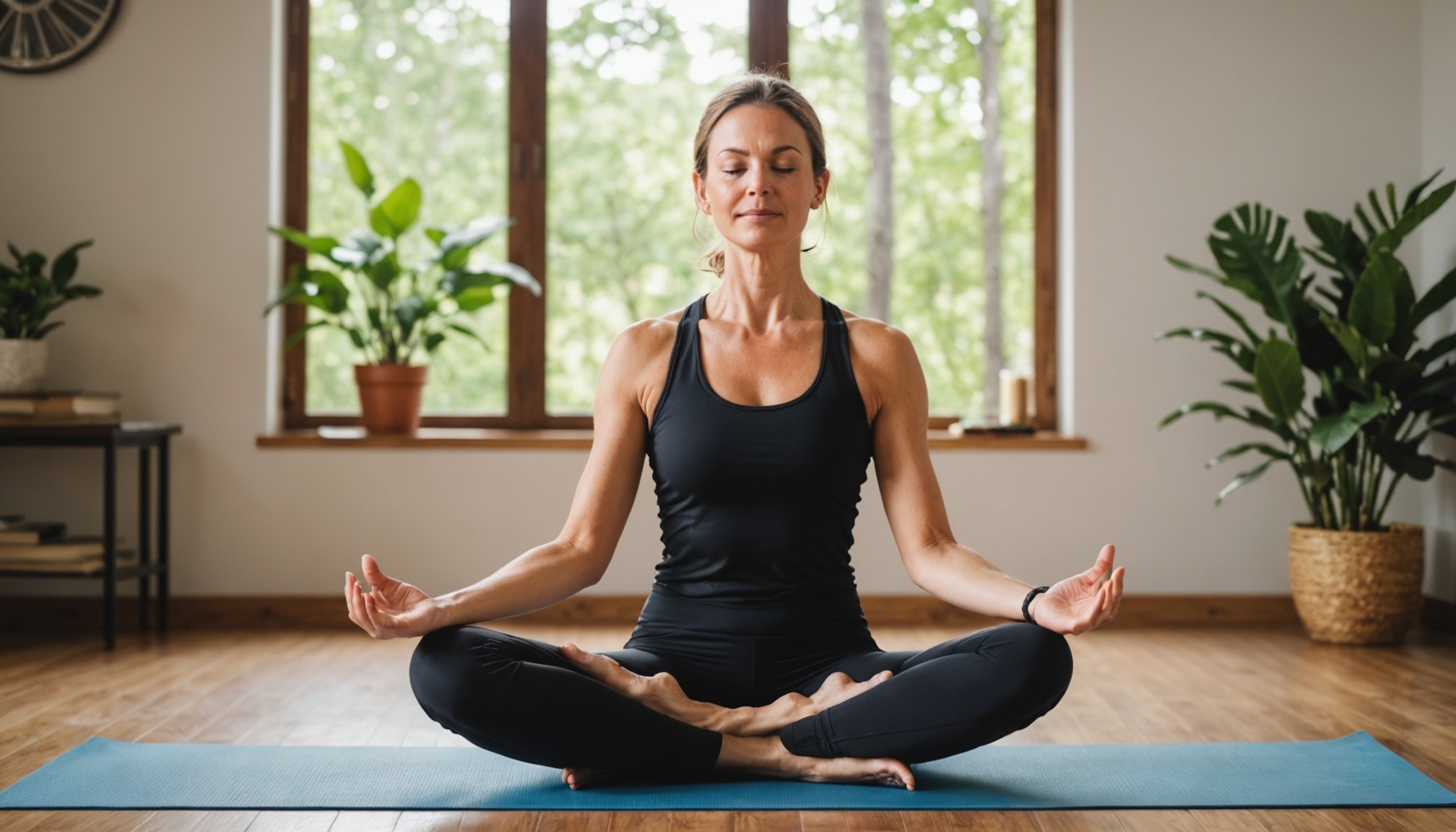Understanding Stress and Its Impact
Stress is an unavoidable part of life, affecting both your mental health and emotional well-being. It can be defined as the body’s response to any demand or challenge, which can be positive (eustress) or negative (distress). Identifying the type of stress you experience is vital for effective stress management.
When stress takes hold, the body undergoes both physiological and psychological changes. Physiologically, stress can trigger the “fight or flight” response, releasing hormones like cortisol and adrenaline. These changes can lead to increased heart rate, elevated blood pressure, and a burst of energy. Psychologically, stress can lead to anxiety, irritability, or overwhelming emotions, affecting your overall mental health.
Have you seen this : Revitalize oily skin: craft your own diy face mask using everyday kitchen staples!
Effective stress management is essential for maintaining overall health. It helps in reducing the negative impacts of stress on the body and mind, promoting better emotional well-being. Techniques such as stress management strategies, relaxation exercises, and mindfulness practices can mitigate stress’s negative effects, allowing for a more balanced life.
Incorporating stress management methods into daily life not only enhances emotional well-being but also fosters a healthier lifestyle. Prioritizing stress relief can result in holistic health, providing a foundation for living a fulfilled and balanced life.
Also to see : Optimal water temperatures for washing colored fabrics: essential tips to preserve vibrancy and prevent fading
How Yoga Transforms Stress Relief
Yoga stands as a powerful ally among stress relief solutions, tapping into both physical and mental domains to combat stress effectively. The intricate mechanisms of yoga work by integrating breathing techniques, physical postures, and meditation, fostering a connection that eases tension and promotes holistic health. By engaging in yoga, individuals experience reduced heart rate and lowered cortisol levels, contributing significantly to overall stress relief.
In comparison to conventional stress reduction methods like aerobic exercise or relaxation techniques, yoga uniquely marries the mind and body, resulting in enhanced emotional resilience and reduced anxiety. While aerobic exercises primarily focus on physical exertion, yoga incorporates mindful awareness and introspection, offering a more profound connection to one’s emotions.
Scientific studies reinforce yoga’s efficacy, demonstrating its role in improving mental health outcomes and stress management. Research published in various scientific journals indicates that regular yoga practice can lead to improvements in perceived emotional well-being, reduced symptoms of anxiety, and remarkably better mental clarity.
These collective findings present yoga as a versatile choice not only for immediate stress relief but also as a long-term strategy to maintain balance and holistic health. Embracing such a practice may pave the way for a more peaceful and centered life.
Essential Yoga Poses for Stress Relief
Exploring yoga poses tailored for anxiety relief can offer a serene pathway to physical relaxation. Stress can manifest physically as tension, and addressing this through specific poses aids in achieving tranquility.
Restorative Yoga Poses
Restorative yoga encourages deep physical relaxation and mental calmness. Popular poses include the Child’s Pose, which is excellent for releasing tension in the hips and back, and Legs-Up-The-Wall, known for its soothing effects on the nervous system. These poses allow the body to rest, encouraging a natural anxiety relief response.
Dynamic Flow Sequences
Engaging in dynamic flow sequences is integral to building a strong mind-body connection. These sequences involve transitioning smoothly between poses, enhancing anxiety relief and fostering an internal rhythm. Practicing flow sequences promotes a heightened state of physical relaxation, allowing stress to dissipate naturally.
Inversions for Calmness
Inversions, such as the Handstand or Shoulder Stand, can transform your stress relief routine. By altering the body’s orientation relative to gravity, these poses stimulate circulation and calm the mind, offering profound physical relaxation. Incorporating inversions can deepen your yoga poses practice, providing essential relief from the burdens of daily stress.
Breathing Techniques to Enhance Yoga Practice
Breathing exercises play a pivotal role in yoga, significantly enhancing relaxation and reducing stress. In the world of pranayama, various techniques are employed to foster a calm and centered mind.
One of the fundamental breathing exercises is Nadi Shodhana, or alternate nostril breathing. This technique is acclaimed for its ability to balance energy channels, thereby promoting a state of inner peace. Practicing Nadi Shodhana involves closing one nostril and inhaling through the other, then switching sides, which harmonizes the mind and soothes anxiety.
Another key technique, the Ujjayi breath, known as “victorious breath,” features a slight constriction in the throat, producing a soft oceanic sound. This method encourages focus and mental clarity, anchoring the practitioner within the present moment and enhancing meditation.
Linking breath to physical poses is crucial for deep relaxation techniques in yoga. With each inhale and exhale, practitioners can deepen into poses, release tension, and anchor their awareness, ultimately elevating the effectiveness of their practice. Engaging in these pranayama exercises regularly facilitates a deeper connection to one’s body and supports a harmonious yoga routine, offering practical stress relief solutions. This synchrony of breath and movement is vital for unlocking the full spectrum of yoga benefits.
Meditation Methods for Stress Relief
Exploring meditation practices offers valuable avenues for cultivating a calm and balanced mind. Different forms of meditation can notably enhance mental clarity and foster a state of mindfulness.
Guided Meditation
Guided meditation involves following a narrator or instructor’s directions, leading you through a series of visualizations or affirmations. This practice supports stress reduction by providing structured focus and relaxation, helping individuals navigate their inner world and alleviate anxiety.
Mindfulness Meditation
Mindfulness meditation encourages practitioners to remain present and attentive to current experiences without judgment. It is instrumental in developing a heightened awareness of thoughts and emotions, facilitating stress management by mitigating overthinking and enhancing emotional regulation. This form of meditation is easily integrated into daily routines, promoting sustained mental clarity.
Visualization Techniques
Visualization involves mentally constructing serene and calming environments or scenarios. By visualizing peaceful scenes, individuals can escape daily stressors briefly, reminding them of tranquillity and fostering emotional well-being. Practicing visualization regularly can significantly reduce stress levels and improve one’s ability to remain centered amidst life’s challenges.
These methods of meditation each offer distinct yet complementary benefits, paving the way towards more profound mental health and overall stress relief solutions. By engaging in these techniques, individuals can cultivate lasting peace and resilience in their daily lives.
Integrating Yoga into Daily Life
Incorporating a daily yoga routine into one’s lifestyle can significantly enhance stress management and overall mental health. Establishing consistency is key. Start by dedicating a short time each day to practice. For those with busy schedules, integrating even brief yoga sessions can offer substantial benefits. Consider setting aside ten minutes in the morning or evening to engage in simple postures or breathing exercises. This approach helps in maintaining a manageable routine and avoids overwhelming time commitments.
Creating a personal yoga sanctuary at home can facilitate regular practice. This doesn’t require substantial space; a quiet corner with a mat and some candles can suffice. The environment should promote peace and encourage solitary focus, fostering a more immersive experience. By personalising this space, one creates a haven for relaxation and peace of mind.
Another aspect of integrating yoga into daily life is being open to lifestyle changes. Embracing small adjustments, like setting reminders or joining online classes, aids in nurturing this habit.
Benefits of a consistent yoga practice are profound. Regular engagement promotes improved emotional well-being, alleviating stress and anxiety. Over time, this discipline supports a harmonious lifestyle, bridging the gap between physical activity and mental respite.
Personal Success Stories and Expert Advice
Exploring real-life yoga testimonials and transformation stories can inspire those seeking effective stress relief through yoga. Many individuals credit yoga for reshaping their lives, enhancing both their mental health and emotional resilience.
One such story comes from Sarah, a corporate executive, who discovered yoga during a particularly stressful period at work. After struggling with anxiety and burnout, Sarah turned to yoga and found solace in its practice, eventually transforming her lifestyle. Through consistent yoga sessions, she nurtured a newfound sense of balance and calm, restoring her emotional well-being.
Insights from Yoga Professionals
Including yoga professionals’ insights further illuminates the profound impact of yoga on stress management. Renowned yoga instructor, Maya Patel, emphasizes that “yoga is not just an exercise; it’s an integrated practice of mind, body, and spirit.” Her perspective highlights yoga’s holistic approach, which offers more than just physical benefits.
Building a Supportive Community
Creating a network for continued practice can be a motivator for many. This community of practitioners and experts can provide encouragement and shared experiences. It enhances one’s commitment to integrating yoga into daily life, making stress relief an achievable goal. The collective wisdom shared through these avenues underscores yoga as a tool for transformative stress relief solutions.











